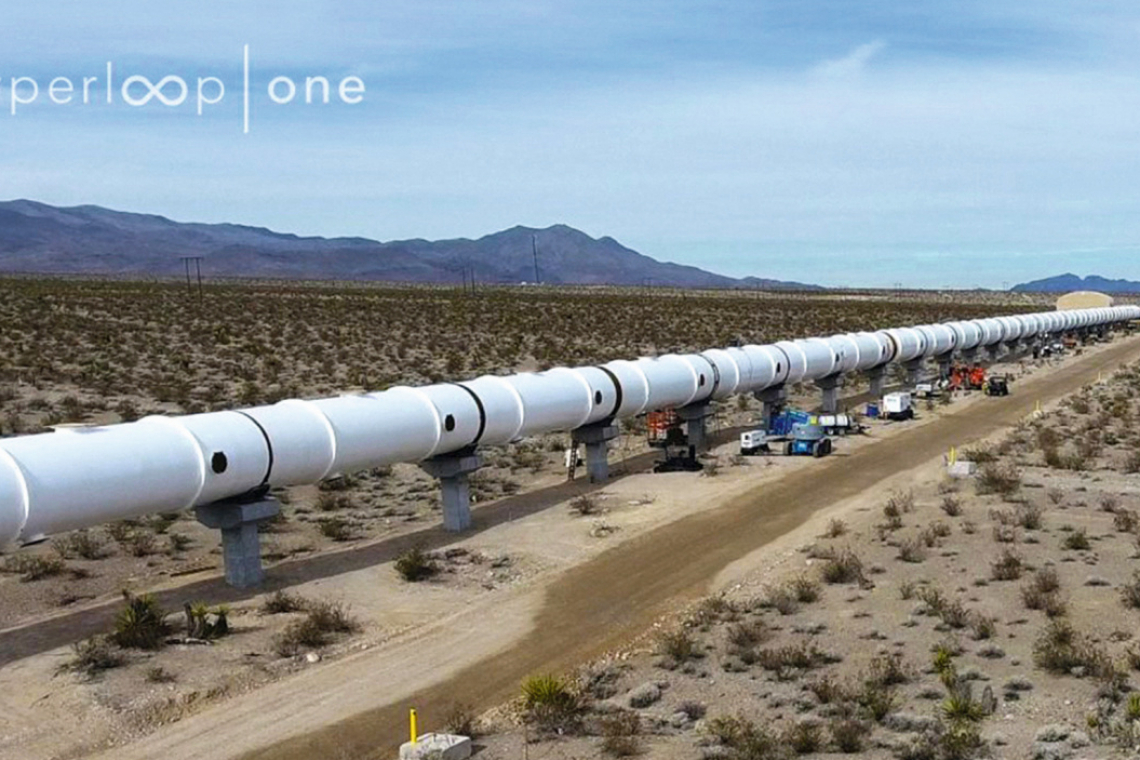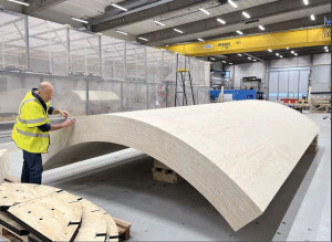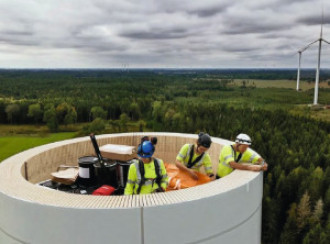What will 2024 bring us?
German is a wonderful language, with some words that simply don't exist in English. One such word is "Weltanschauung". So what can we see when we look ahead to 2024? Of course, you try to be optimistic - but that's not easy today. We are currently experiencing two wars, one in Ukraine and one in Gaza. If we look back in history, there have been so many wars triggered by so many different reasons, sometimes by border disputes, sometimes by trade disputes. But the wars in Ukraine and Gaza have a different motive. In both cases, the aggressor is simply seeking the complete destruction of a recognized state. The three "H's" - Hamas, Hezbollah and the Houthis (with Iran behind them), want the destruction of the state of Israel. And Vladimir Putin also wants to annex Ukraine, wants to reintegrate it into a modern version of the Soviet Union. We here in Europe might recall the shameful words of a former British Prime Minister when the Sudetenland was threatened in 1938: "A quarrel in a distant land between people we know nothing about".
Today we could say the same about Ukraine, Israel and the Gaza Strip. But in recent weeks we have learned that the war between Israel and Gaza also affects us. The Houthis are attacking ships in the Red Sea, even those that have no connection to Israel. As a result, some shipping companies have decided to send their ships on a longer detour, which means additional time and costs for the goods we import to Europe. In a way, we are less affected by the various wars in Africa. Libya, Ethiopia, Sudan, Niger, the Democratic Republic of Congo, Nigeria - all these countries are ravaged by civil wars. Putin will think twice before attacking a NATO country. But he is taking a close look at the Arctic, where the melting snow is exposing huge reserves of valuable metals and minerals. Apart from the wars, we are facing a problem this year that is not new, but could become even more acute in 2024. I am referring to the mass migration of people seeking a better life either in North America or here in Europe. In the case of North America, they mainly come from South America - around 2 million in 2023, a huge number that even the USA cannot absorb. In the case of Europe, they come mainly from Africa and the Indian subcontinent. What is the solution? President Trump has started building a huge steel wall over 1000 km long. If he is re-elected, will he take up this project again?
Only the Australians have more or less solved the problem. Illegal immigrants are sent to an offshore island where their asylum claims are assessed - and those who fail are sent back to the countries they came from. But global climate change and population growth - in some African countries there is still a population growth of 5+ children per family - means that migration pressure will only increase.The final concern I would like to express is the upcoming presidential election in the US in November. Currently, one of the two candidates appears to be a man who has already been convicted of several felonies and has other cases pending, and would be 78 years old when he takes office. His opponent would be 82 years old when he takes office - and is already showing the effects of age. Neither man can be described as "pro-European". There is still time for better candidates, but that seems unlikely at the moment.
New ideas - not all are crowned with success
Almost every week we hear about exciting new technological ideas. Many cost hundreds of millions of euros to develop. And not all of them are successful. In January, we learned that the company Hyperloop One was shut down. This company was founded to develop the "Hyperloop", which was invented by Elon Musk, perhaps the richest man in the world. As a reminder, it was a means of transport, an evacuated tube with a diameter of about 2 meters, in which a capsule with about 40 seats was to be transported at a speed of up to 1000 km/h. The "capsule" was suspended using magnetic levitation technology and propelled by magnetic fields. The first route was to connect San Francisco with Los Angeles. A short test track (Fig. 1) was built in the Californian desert. It is not clear why the project was abandoned. But Mr. Musk will not be idle. Not only does he run Tesla, but last year he also bought Twitter (now known as X) and owns SpaceX, a company with an ambitious program of rocket launches.
AI - artificial intelligence
AI made a lot of headlines in 2023, and that is sure to continue this year. So far, almost all major developments have been carried out by US companies. AI is already being used in some areas of medicine, particularly in the interpretation of X-rays and other scans. It is being used by lawyers to draft contracts, and its use in the Hollywood film industry was partly the reason for a long strike last summer. AI is not only capable of writing scripts, but can even, at least partially, replace actors. In the pharmaceutical industry, it is now being used to predict new types of drugs, while - at a lower level - AI is being used in "call centers" to replace human telephone operators. How will these developments play out? It seems that AI will replace human employees in some situations. AI has already been used to write newspaper articles. Could it one day replace me and my colleagues at Leuze-Verlag? And will it play a role in our industry? In the office, the so-called In the office, the so-called "front office", for sure, if only to answer the phone or process e-mails. But in the workshop? We will certainly see the gradual introduction of robots, and some of them could include AI. In an interesting development, the UK Supreme Court ruled last month that AI cannot be named as an inventor in a patent application. Dr. Stephen Thaler had tried to have his AI, called Dabus, acknowledged as the inventor of a food container. But this was rejected. A far more serious and potentially far-reaching legal dispute has been initiated by the New York Times, which is suing Microsoft and OpenAI, the developers of the AI "ChatGPT". The lawsuit challenges the entire basis of so-called. "Big Language Models" and their use in AI. Companies like OpenAI scan millions of books, newspapers, magazines, patents and other printed (and visual) material into a huge database. When the system is then given a task, it rummages through this huge memory bank and selects certain elements, which it then uses to create an "original text". The basis of the lawsuit is that the AI system used text that originated in part from the New York Times and is protected by copyright. The New York Times is seeking billions of dollars in damages, and if it wins, other publishers will almost certainly follow, and the OpenAI company (and others like it) will be ruined. It's hard to imagine a bigger challenge. There is no doubt that the text generated by ChatGPT is "novel" and does not infringe copyright in the traditional sense, e.g. at least 120 consecutive words identical to previously published works. I'm not a lawyer, but I think the New York Times will lose its case. And why? We've all read something before and then maybe incorporated some of what we read into something we then wrote ourselves. All ChatGPT and other systems have done is automate that "remembering". The next few weeks will show whether I'm right or wrong - and readers can join me in making their own predictions. More worryingly, there are already cases where criminals have used AI, for example in a phone call or email, to impersonate someone else in order to deceive. Will AI lead to an increase in unemployment? The general view is that it will not, but that in some cases it will change the work that people do. Only one thing is certain - we will be hearing a lot more about AI this year.
"Early adopters" - not so smart?
We all know someone who has bought the latest technology and proudly shows it off to their family and friends. Maybe it's the latest cell phone, maybe it's a laptop or an electric car. Some of these technologies are far from "ripe" and within less than a year they can be obsolete and replaced by much better technology. I am perhaps thinking of heat pumps, which many have bought in recent years. I have even seen such a device over 20 years ago. Most people who have bought a heat pump (usually an air heater) are reasonably satisfied. As long as it is not very cold, they have a coefficient of performance (COP) of around 3 out of 5, but in temperatures below freezing, the COP can drop to 1 out of 5 on older appliances. Most heat pumps on the market today produce hot water (and in some cases hot air) at around 50°C, which is lower than the typical output of a gas boiler, around 65°C. In some cases, particularly in poorly insulated buildings, this requires the installation of larger radiators - an additional and unwelcome expense. The latest development is the use of new refrigerant gases, including R290 or propane. R290 is more environmentally friendly than older refrigerants, so leaks are not as damaging in terms of climate change. It is also up to 34% more efficient, allowing heat pumps to deliver higher temperatures without suffering major efficiency losses. The British company Octopus Energy recently launched a heat pump called Cosy 6, which can heat water up to 80 °C. The aroTHERM plus heat pump from Vaillant works at outside temperatures as low as -20 °C and can supply hot water at a temperature of up to 75 °C. To remain efficient, the temperature should not exceed 55 °C, according to the manufacturer. Another company, Vattenfall, manufactures a heat pump that uses a different refrigerant, R744, orCO2. It can deliver even higher temperatures, up to 85 °C. And a spokesman for Daikin says its Altherma heat pump, which uses R32 as a refrigerant, can reach 70°C. The company plans to launch a range of R290-based heat pumps later this year. The independent non-profit organization Energy Systems Catapult has tested 742 heat pumps of different models in various residential buildings in England and Scotland since 2020. They report that the R290 heat pumps involved in the study performed well. On an annual average, the R290 high-temperature heat pumps performed significantly better than those using the phased-out refrigerant R410A. These heat pumps consistently achieved a coefficient of performance of around 3. At current energy prices, a COP of around 3 or higher is required for heat pumps to compete with gas boilers on operating costs. Although R290 provides better efficiency at higher temperatures, the best COPs are achieved when the output temperature is as low as possible. There are some limitations with R290 heat pumps, such as the fact that they cannot be installed near air ducts or windows at floor level to eliminate the risk of the flammable refrigerant leaking into such areas. A new user had an R290 heat pump installed a few months ago. Although this was not absolutely necessary, he decided to install larger radiators and to keep the flow temperatures to a maximum of 45 °C. As a result, the heat pump has a coefficient of performance of almost 4. Readers have already read about a new generation of high-temperature heat pumps in a recent issue of the newsletter. Conclusion: Heat pump technology is still in the development stage and offers a bright future for both businesses and private households. In some cases, we will have to change our premises and/or processes to get the maximum benefit. Fig. 2: Current and planned wind turbines in MW .
Fig. 2: Current and planned wind turbines in MW .
Wind power - The future - but not all is equal
2023 was a good year for new wind turbines and 2024 promises to be just as successful. This can be seen in Figure 2 - and the growth, as we can see, is exponential!
But do we need to use steel to build the masts for wind turbines? Modvion(https://movion.com), a Swedish start-up, has just built the world's tallest wooden turbine tower and claims that using wood for wind energy is the future. The new turbine, located just outside Gothenburg, is 150 meters high (to the tip of the blade) and has an output of 2 MW. The company is planning even higher and more powerful wooden turbines. The 105 m high tower itself owes its strength to the 144 layers of laminated veneer lumber (LVL) that make up its thick walls. Figures 3 and 4 show the tower under construction. By varying the grain of each of the 3mm-thick layers of spruce, Modvion says it was able to control the strength and flexibility of the wall. "That's our secret recipe," says the company's co-founder, former architect and boat builder David Olivegren. In the factory on the outskirts of Gothenburg, the thin layers of wood are glued and pressed together to produce the curved sections. These parts are then glued together on site to form circular rings and then stacked on top of each other to build the tower. "Wood and glue are the perfect combination, we've known that for hundreds of years," says Olivegren. "And because wood is lighter (than steel), you can build taller turbines with less material." Not everyone shares this view. Dr. Maximilian Schnippering, head of sustainability at Siemens Gamesa, one of the largest turbine manufacturers in the world, says that more parts probably means more trucks, more people and more time for installation. He agrees that the modular system can offer an advantage in certain circumstances and that wooden towers can "complement" steel-made towers well. I would like to leave the reader with two thoughts. Firstly, the world is moving quite well towards a green future, and this is not only important if we want to avoid severe climate change, but also reduces our dependence on Russia, for example. My second thought is that while I am writing here about wind turbines, there is a much broader debate about whether we should use wood - a renewable material - for other structures such as houses or even residential and office buildings. We have already seen wooden buildings up to 10 stories high. So the question for 2024 is: more wood or more steel?
The phase-out of hydrocarbons
Apart from the fossil fuels we burn to generate energy, whether in our cars or at home, we use large quantities of petroleum products to produce plastics. In 2024, the trend towards alternative materials will continue, whether for packaging or for items such as furniture. Celine Sandberg, founder of the Oslo-based company Agoprene, and her colleagues experimented with oyster shells. The shells were ground into a powder and used to produce a foamy material. Agricultural waste and wood fibers were also experimented with in a similar way. "We tried a number of different materials, but most of them turned out to be hard foam and not flexible," she says. Eventually, the scientist came up with seaweed, which her team turned into a powder and baked in a special oven. The result is a block of foam that is soft enough to be used in seat cushions and chairs. "The foam is 100% biodegradable. You can simply leave it in the ground and it will break down naturally within eight months - it's even quicker if you cut it into smaller pieces," says Sandberg. Agoprene now wants to expand production and move to a larger production facility next year. Another Danish design company, Mater, has developed a range of chairs with seats and backrests made from materials mixed with either discarded coffee bean husks or sawdust from furniture production. His outdoor furniture is made from marine waste. In addition to algae and coffee husk waste, there is another unusual option that researchers hope can replace plastic: Mushrooms. Mycellium, the root-like and branched structure of a fungus, is the basis for BioKnit, a new type of textile developed by researchers at the Hub for Biotechnology in the Built Environment (HBBE) in Newcastle Upon Tyne. The process starts with a mycelium growing on a substrate such as sawdust, says Jane Scott, head of HBBE's living textiles group, and then it is placed in a dark and humid environment so that it binds and absorbs the nutrients from the sawdust. It is then dried in an oven-like device. BioKnit is already being used by designers, for example for lampshades. Jane Scott sees an advantage of this material in the fact that it is self-decomposing as it is bio-based and does not use binders or adhesives that would not decompose in a landfill. Major designer brands are keen to join smaller, nimble companies in incorporating sustainable materials into their furniture. US kitchen and home furnishing company Williams Sonoma has stated that it now uses responsibly sourced cotton and recycled polyester, and IKEA plans to use only renewable and recycled materials in its products by 2030.
Whatever may come our way in 2024 - war, inflation, supply chain issues - we as scientists and technologists will continue to improve our world.
I wish all Galvanotechnik readers and the makers of our magazine a happy and successful 2024!




